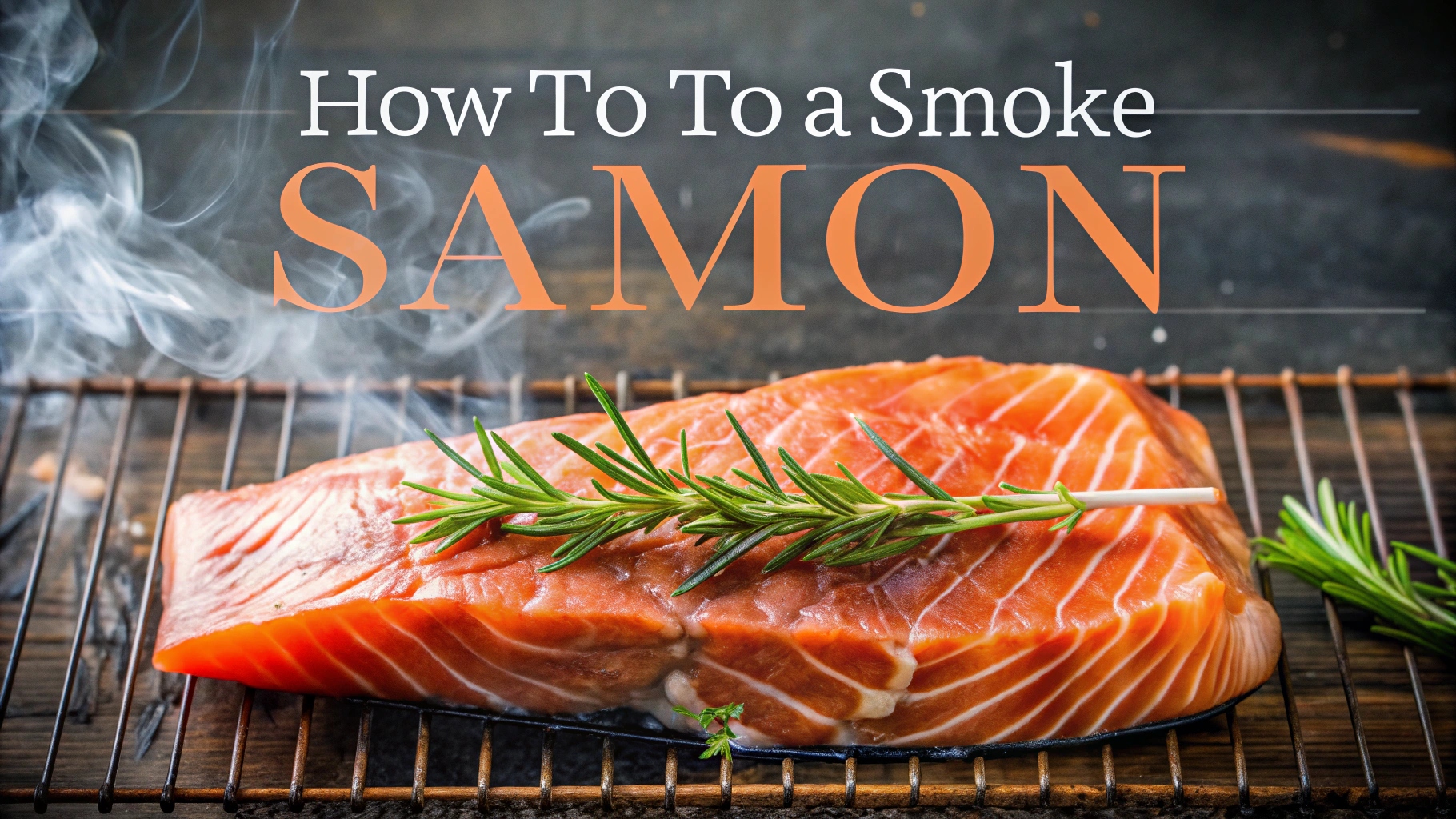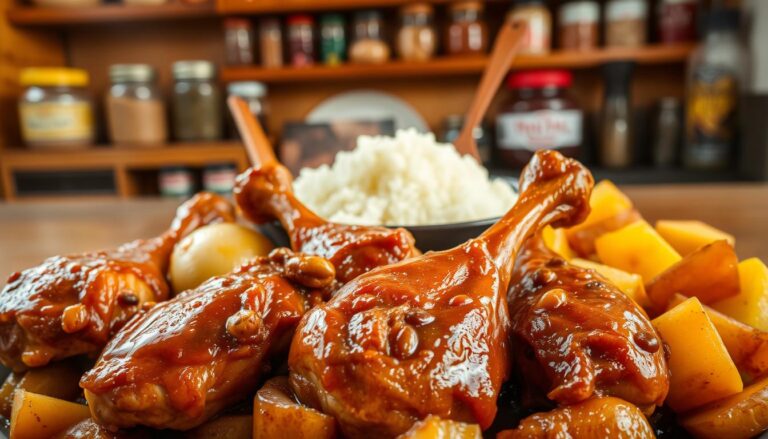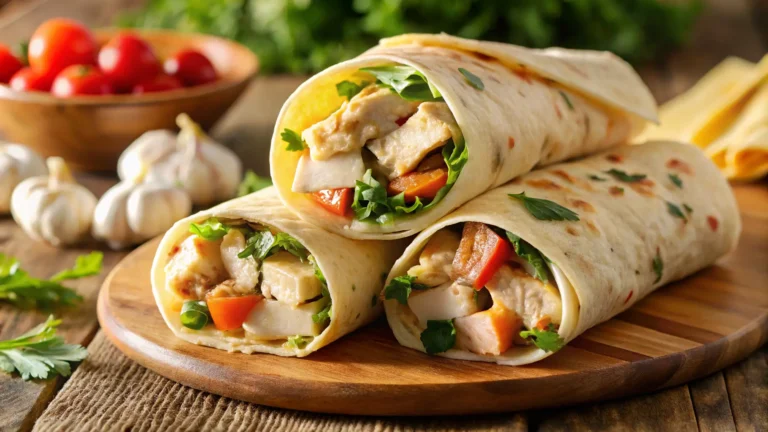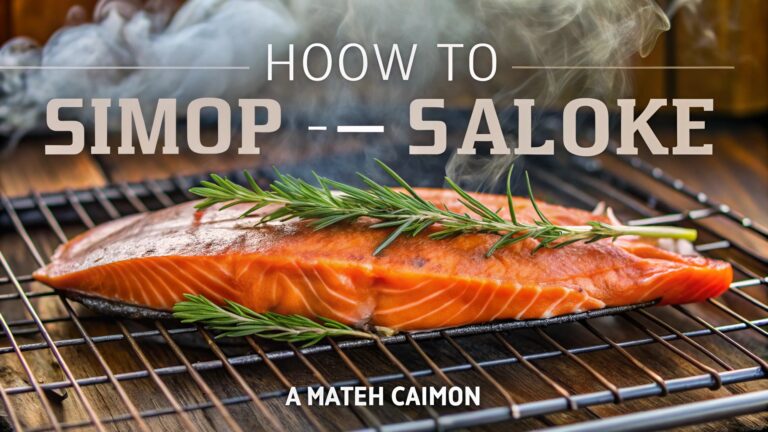How to Smoke Salmon: 5 Expert Tips for Amazing Flavor

The first time I smoked salmon in my backyard, it changed our weekend. The smell of smoked fish made our gathering unforgettable. Smoking fish turns a simple salmon into a gourmet treat. If you’re new to smoking salmon, get ready to impress your loved ones with amazing flavors.
Learning to smoke salmon takes passion, precision, and practice. These five expert tips will help you master the art of smoking fish. You’ll learn how to pick the best salmon and control the temperature. Soon, you’ll make dishes that are as good as those in professional kitchens.
Smoking salmon makes a simple ingredient into something special. With the right techniques, you can make this healthy protein into a delicious dish. Get ready for a tasty journey.
Key Takeaways
- Smoking salmon is an art that enhances flavor and texture
- Quality ingredients are crucial for exceptional results
- Proper technique matters more than expensive equipment
- Patience is key in achieving perfect smoked salmon
- Experimenting with different wood chips creates unique flavor profiles
Understanding the Basics of Smoking Salmon
Smoking salmon is an old way to keep fish fresh and make it taste amazing. It turns fresh fish into a tasty treat with deep flavors. To smoke salmon well, you need to know the basic steps.
Smoking fish uses low heat and smoke to cook and keep it fresh. This method makes the salmon taste better and last longer. It’s done by controlling the process carefully.
What Is Smoking?
Smoking fish means exposing it to smoke from wood chips. This process:
- Removes moisture from the fish
- Adds smoky flavors
- Creates a layer that stops bacteria from growing
Types of Smoking Methods
There are two main ways to smoke salmon: hot smoking and cold smoking.
| Smoking Method | Temperature | Cooking Result |
|---|---|---|
| Hot Smoking | 120-180°F | Fully cooked, flaky texture |
| Cold Smoking | 70-90°F | Raw, silky texture |
Benefits of Smoking Salmon
Smoking salmon has many good points for cooks and food lovers:
- Enhanced flavor profile with smoky tastes
- More protein
- Better food preservation
- Great for many dishes
Knowing these basics will help you make tasty smoked salmon at home.
Choosing the Right Salmon
Choosing the perfect salmon is key for great smoking results. The type of fish you pick can really change how your smoked salmon tastes and looks. Knowing about different salmon types and where to find them can make your smoking at home even better.
Best Salmon Varieties for Smoking
Not all salmon is good for smoking. Some types are better than others because of their taste and texture:
- King (Chinook) Salmon: Rich, buttery texture with high fat content
- Sockeye Salmon: Deep red color and intense flavor
- Coho Salmon: Milder taste, perfect for beginners in salmon smoking techniques
Fresh vs. Frozen Salmon
When smoking salmon at home, think about the fish’s state. Fresh salmon tastes better, but good frozen salmon is also a great choice. Look for fish that was frozen quickly and thawed carefully.
Sourcing Quality Salmon
Finding the best salmon is the first step to success. Here are some tips for smoking salmon at home:
- Choose wild-caught salmon when possible
- Check for firm, bright-colored flesh
- Buy from reputable fishmongers or trusted seafood markets
- Avoid fish with strong fishy odors
Pro tip: Build a relationship with local fishmongers who can guide you to the freshest catch of the day.
By picking the right salmon, you’ll make a delicious smoked salmon that will wow your family and friends.
Preparing Your Salmon for Smoking
Smoking salmon starts with careful preparation. Success depends on the right techniques and understanding salmon preparation. From filleting to brine recipes, each step affects the flavor and texture.
Before you start smoking salmon, learn the basic steps. The right preparation turns ordinary fish into a tasty smoked treat.
Filleting Your Salmon Like a Pro
Proper filleting is key for great smoked salmon. Here’s how to get perfect cuts:
- Use a sharp fillet knife with a flexible blade
- Remove scales by scraping against the grain
- Cut along the backbone to separate fillets
- Trim away any remaining bones with tweezers
Brining Techniques for Maximum Flavor
Brine recipes for smoking salmon offer two main methods: dry and wet brining. Each method adds its own flavor to the fish.
| Brining Method | Characteristics | Recommended Use |
|---|---|---|
| Dry Brining | Salt and sugar rub directly on fish | Creates firmer texture, concentrated flavor |
| Wet Brining | Submerging salmon in saltwater solution | Keeps fish more moist, subtle flavor infusion |
Enhancing Flavor with Marinades and Spices
Boost your salmon smoking by trying marinades and spice blends. Think about classic mixes like:
- Maple and black pepper
- Dill and lemon zest
- Garlic and brown sugar
- Cajun spice blend
Remember, light seasoning lets the salmon’s natural taste shine. You want to add to it, not hide it.
Selecting the Right Equipment
Starting your journey in smoking salmon means picking the right tools for tasty results. The process might seem daunting, but with the right gear, you’ll make top-notch smoked fish easily.
Types of Smokers for Salmon Preparation
There are many smokers to choose from, based on your skill and budget:
- Electric Smokers: Great for beginners, they keep the temperature steady
- Charcoal Smokers: Give a deep, smoky taste
- Propane Smokers: Easy to use for outdoor cooking
Essential Smoking Accessories
How To smoke salmon well, you’ll need some important tools:
- Digital meat thermometer
- Fish baskets or grill mats
- Wood chip boxes
- Basting brush
Safety Equipment for Smoking
“Safety should always be your first ingredient when smoking salmon.” – Professional Chef
Keep yourself safe with these essential items:
- Heat-resistant gloves
- Long-handled tongs
- Fireproof work surface
- Proper ventilation system
Your smoking setup is key to making perfect smoked salmon. Choose quality equipment, and you’ll soon be a pro at smoking.
Getting Your Smoking Setup Ready
Preparing how to smoke salmon needs careful attention and the right tools. The right setup is key for that perfect smoky flavor. It can turn simple fish into a tasty dish.
First, collect your essential smoking tools. Know the important parts of smoking salmon well.
Preparing the Smoker
Clean your smoker well before each use. Get rid of old residue that can affect salmon’s flavor. Here’s how to pick the best wood for smoking salmon:
- Check your smoker for damage
- Wash parts with warm, soapy water
- Dry them well to avoid rust
- Make sure seals and gaskets fit right
Choosing the Right Wood Chips
Picking the right wood for smoking salmon can really improve your dish’s taste. Different woods give different flavors:
| Wood Type | Flavor Profile | Intensity |
|---|---|---|
| Alder | Mild, slightly sweet | Light |
| Apple | Fruity, subtle sweetness | Medium |
| Hickory | Strong, bacon-like | Intense |
Temperature Control Techniques
Keeping the temperature steady is crucial when smoking salmon. Aim for a range of 175-200°F for the best results. Use a digital thermometer to keep an eye on both smoker and salmon temperatures.
- Preheat the smoker before adding salmon
- Use a water pan to control heat
- Don’t open the smoker too often
- Adjust vents for exact temperature control
Smoking Your Salmon
Learning to smoke salmon at home needs patience and precision. It turns fresh salmon into a tasty treat with deep flavors. Knowing the right steps ensures your salmon turns out perfectly every time.

Timing and temperature are key when smoking salmon. The thickness of the salmon affects how long it needs to smoke. Here are some tips for smoking salmon at home:
- Thin fillets (½ inch): 2-3 hours
- Medium fillets (1 inch): 3-4 hours
- Thick fillets (1.5 inches): 4-5 hours
How Long to Smoke Salmon
The smoking time affects the taste and texture. Shorter times give a lighter taste, while longer times make it smokier.
Checking for Doneness
It’s important to check if the salmon is done. Here’s how to make sure it’s perfectly smoked:
- Internal temperature should reach 145°F
- Flesh should flake easily with a fork
- Color should be opaque and light pink
Techniques for Even Smoking
To smoke evenly, place salmon right and rotate it. Put thicker parts closer to the heat and flip it halfway through.
| Smoking Technique | Benefit |
|---|---|
| Rotate Fillets | Ensures consistent heat distribution |
| Use Water Pan | Maintains moisture and regulates temperature |
| Monitor Hot Spots | Prevents uneven cooking |
Pro tip: Always let your smoked salmon rest for 15-20 minutes after smoking to allow flavors to settle and moisture to redistribute.
Flavorings and Seasonings for Smoky Salmon
Adding the right seasonings can make your smoked salmon recipes stand out. The flavors you choose can turn a simple dish into a memorable experience. Each bite becomes a unique adventure in taste.
Traditional Dry Rubs that Enhance Flavor
Dry rubs add depth to smoked salmon. Here are some classic options:
- Classic Sea Salt and Black Pepper Rub
- Smoky Paprika and Garlic Blend
- Brown Sugar and Cayenne Pepper Mix
Unexpected Flavor Combinations
Try new things with your salmon smoking. Mix up ingredients for exciting flavors:
- Maple and Bourbon Rub
- Citrus and Herb Blend
- Asian-Inspired Ginger and Sesame Seasoning
Glazing and Sauce Techniques
Glazes can make your smoked salmon look and taste amazing. Here are some great options:
| Glaze Type | Flavor Profile | Best Used With |
|---|---|---|
| Honey Mustard | Sweet and Tangy | Cold-Smoked Salmon |
| Teriyaki | Sweet and Savory | Hot-Smoked Salmon |
| Maple Bourbon | Rich and Complex | Wild-Caught Salmon |
Pro tip: Put glazes on during the last 15-20 minutes of smoking. This prevents burning and gives a perfect caramelized look. Your smoked salmon will taste amazing and look like it was made by a pro.
Storing Smoked Salmon
Learning to smoke salmon at home is just the start. Keeping it fresh is key. The right storage keeps the salmon’s taste, texture, and safety.

Smoking salmon requires quick cooling and storage to stop bacteria. Chefs suggest several ways to keep your salmon fresh and tasty.
Proper Cooling Techniques
Cooling smoked salmon fast is vital for safety. Here are some tips:
- Take salmon out of the smoker and let it rest for 15-20 minutes
- Put salmon on a clean, safe cooling rack
- Keep the room cooler than 70°F while cooling
- Don’t let salmon sit at room temperature for over 2 hours
Vacuum Sealing for Freshness
Vacuum sealing keeps smoked salmon fresh longer. It removes air and stops oxidation. This keeps the salmon’s flavor and texture.
| Storage Method | Refrigerator Shelf Life | Freezer Shelf Life |
|---|---|---|
| Vacuum Sealed | Up to 2 weeks | Up to 3 months |
| Regular Wrap | 3-5 days | 1-2 months |
Best Practices for Refrigeration
Refrigerate smoked salmon right after cooling. Use airtight containers or vacuum-sealed bags. This keeps moisture in and flavor strong.
- Store at 38-40°F in the coldest part of the fridge
- Wrap tightly in plastic wrap or foil
- Best taste within 5-7 days
- Don’t refreeze thawed smoked salmon
Enjoying Your Smoked Salmon
You’ve learned how to smoke fish, and now it’s time to enjoy your homemade smoked salmon. Your journey in the kitchen is just starting! Smoked salmon is very versatile, making it a great addition to many dishes.
There are many classic smoked salmon recipes to try. Start your day with a bagel, cream cheese, and salmon. Or, make elegant appetizers by rolling salmon around herbed cream cheese. These recipes are perfect for brunch, parties, or a quick dinner.
Be creative with leftover smoked salmon. Use it in pasta, frittatas, or salads. A salmon-filled quiche is a great breakfast choice. Adding salmon to a summer salad adds protein and flavor. Both chefs and home cooks love how smoking fish can make a simple ingredient special.
Try new things like smoked salmon on crostini with dill or in cream cheese. Your homemade smoked salmon is more than a meal. It’s a chance to explore new flavors and create delicious dishes.







